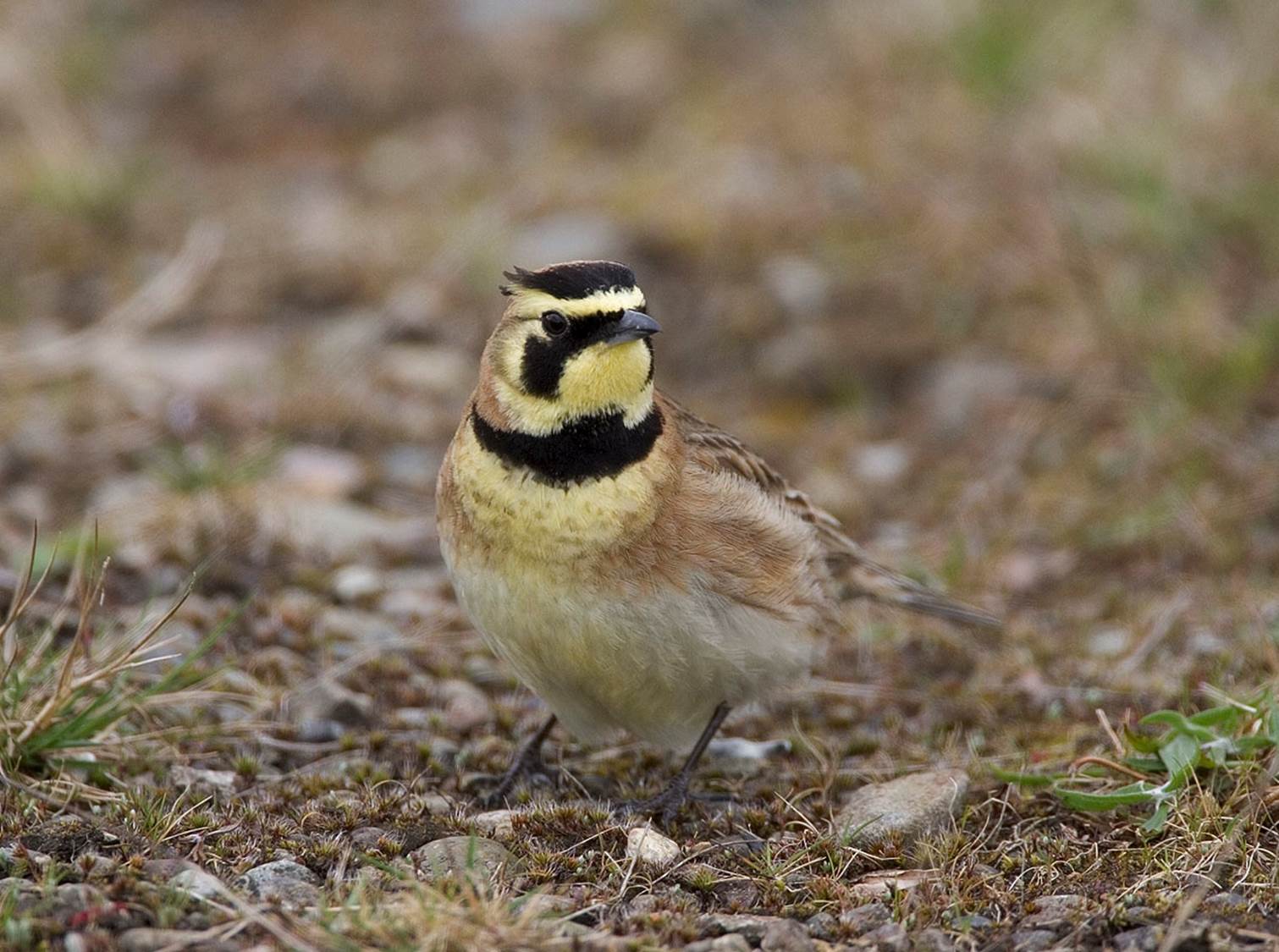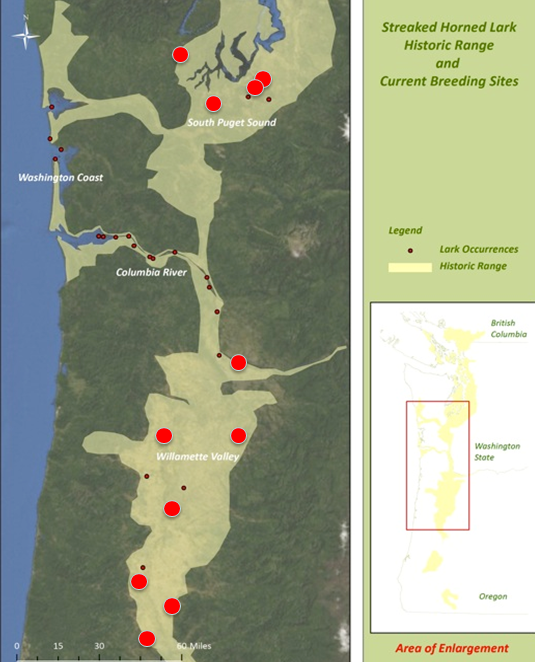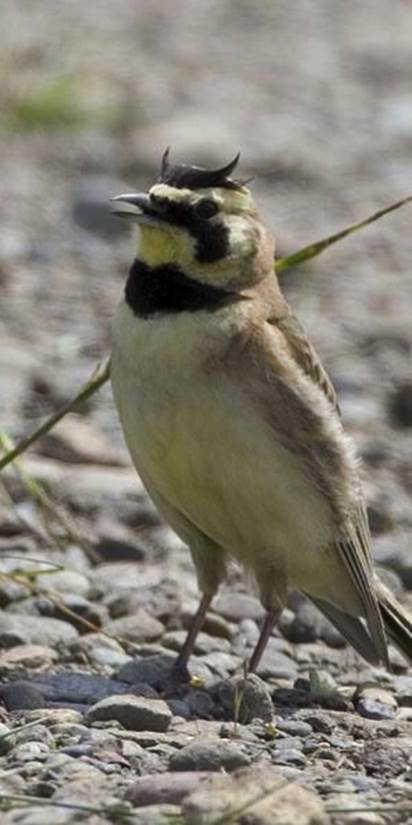
Streaked horned larks (Eremophila alpestris strigata) are small birds compared with the vast open spaces of their required habitat. A sub-species of the horned lark, they are distinguished by the more yellow and rusty tones of their feathers. The hops and skips of the male breeding dance and distinct call also aid in identification.
Low population numbers prompted the U.S. Fish and Wildlife Service to list them as federally threatened in 2013 under the Endangered Species Act. These tiny birds face many dangers, including predation by crows, coyotes and northern harriers, as well as diminishing habitat. Their unique habitat requirements leave limited options in their native range of western Washington and Oregon.
Streaked horned larks are a disturbance-dependent species. Their historical habitats were early successional grasslands affected regularly by flood and fire. However, developed shorelines, fire suppression and river damming have effectively removed those natural disturbances. Their preferred open, sparsely vegetated habitat is increasingly rare within their native range. In recent times, the bird primarily inhabits human-disturbed landscapes that mimic these features, such as mowed fields, agricultural activities, dredged material placement sites, beaches, and areas where vegetation has been cleared and graded for site development.

Map Credit: Center for Natural Lands Management
In the Portland Metropolitan region, such landscapes are known to occur at Portland International Airport and Rivergate Industrial Park – yet both areas present hazards as highly urbanized sites. Owned by the Port of Portland, they are zoned as industrial and have specific purposes to support airport and industrial operations. At PDX, streaked horned larks face the additional danger of bird-plane collisions. Without routine management, the natural succession of vegetation will make both sites unsuitable within a few years.
To respond to the challenges of habitat loss, the Port recently submitted a proposed Habitat Conservation Plan to the U.S. Fish and Wildlife Service for streaked horned lark conservation. The plan allows for the Port to have an Incidental Take Permit to displace birds from industrial and airport land and create and manage habitat at the proposed Sandy Island Conservation Area. Development activities associated with the permit would occur outside of nesting season to avoid direct harm to the species.
To mitigate for development, the Port proposes to create and maintain 32 acres of land dedicated solely as streaked horned lark critical habitat at Sandy Island, a former dredged material placement site in the lower Columbia River. Active vegetation management at a dedicated conservation area provides important long-term benefits to birds. Without it, the site is expected to naturally “fill-in” with plant growth.

The plan estimates that with the proposed site management, 148 nesting pairs would thrive over the duration of the 30-year permit term. The Sandy Island Conservation Area would be the first and only site that is managed solely for the conservation of streaked horned larks. It is located within species range of Rivergate and PDX, providing a convenient locale for displaced birds. It is a remote area where they can nest and raise young – away from industrial development and the dangers of active aircraft.
A Science Advisory Team of species experts from the Center for Natural Lands Management, American Bird Conservancy and The Nature Conservancy provided technical guidance on developing the plan. SWCA Environmental Consultants and AKS Engineering & Forestry, LLC supported its development. The U.S. Fish and Wildlife Service, Federal Aviation Administration and other federal and state natural resource agencies, scientists and conservation organizations and various stakeholders work with the Port to protect streaked horned larks.
The U.S. Fish and Wildlife Service is taking public comment on the plan for 45 days beginning Nov. 22, 2016. Comments can be submitted through the Federal Register website. They are important, and can help shape the alternatives and factors considered when evaluating the project. To learn more, please see the Port’s Streaked Horned Lark Fact Sheet. For more information on the plan, please contact Lisa Appel, Port environmental outreach manager, at lisa.appel@portofportland.com or 503.415.6047.

